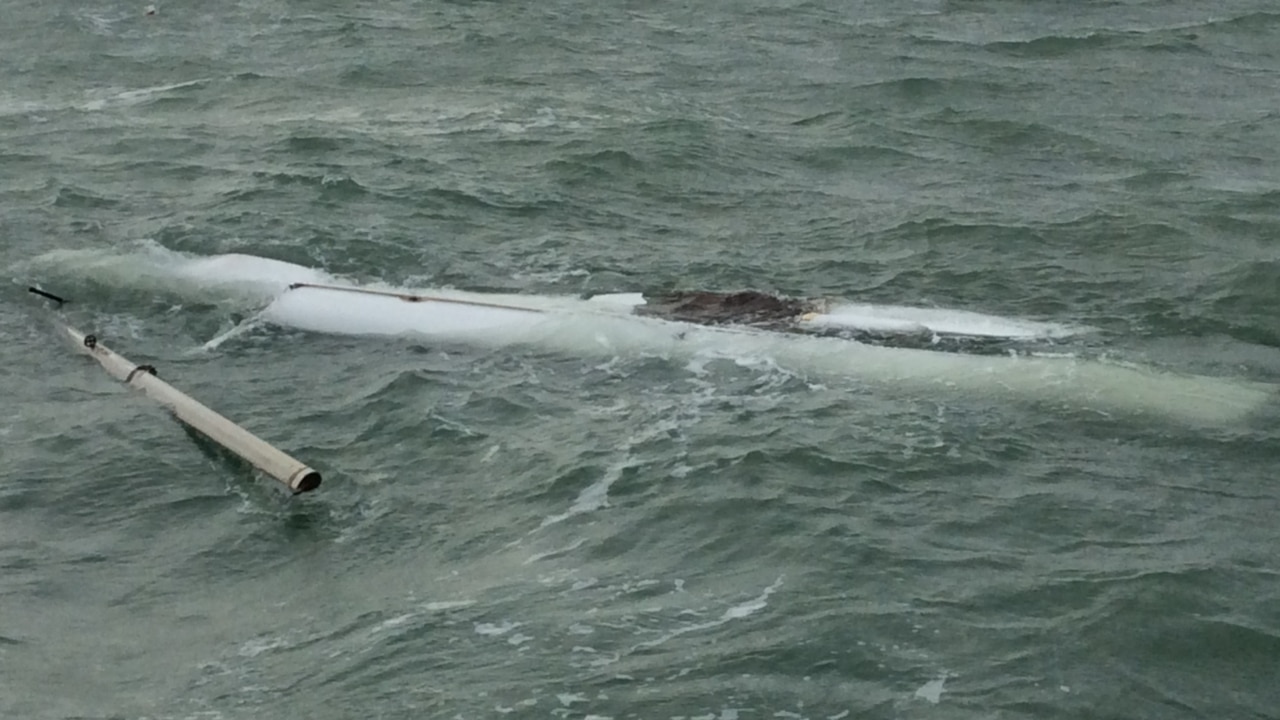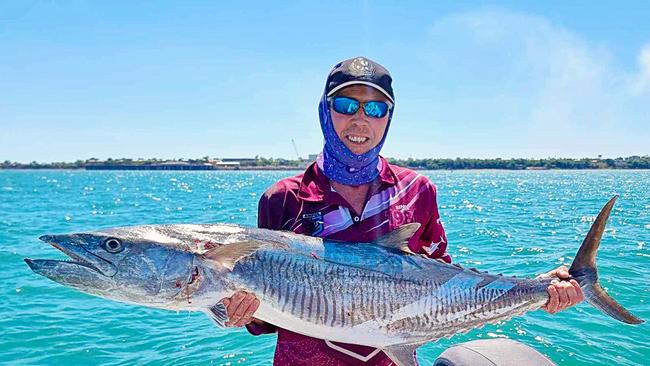Alex Julius fishing column: How to outsmart sharks while fishing
Expert fisho Alex Julius is back with another classic Territory fishing tale. Read his latest advice from the tinny.

Fishing
Don't miss out on the headlines from Fishing. Followed categories will be added to My News.
One thing you hear a lot about when chatting with anglers who have been offshore blue water fishing is the significant prevalence of sharks.
Both anglers who chase reef fish and anglers who hunt pelagic species bemoan the constant loss of fish to predatory sharks.
It’s a problem that has been getting increasingly worse, with many believing there are more sharks around now than ever before; there has even been discussion about the risk of shark attack.
In some circles, our world-famous “legitimate” man-eater, the saltwater crocodile, is taking second fiddle.

Given the choice, I’d rather swim with a shark than a crocodile any day, and that includes big tiger sharks.
For the record, tiger sharks – and dozens of other species of shark – wander along our coastline in fair numbers right through the year.
Ask any commercial barra fisherman and he’ll tell you he’s had numerous encounters with big tiger sharks raiding his nets.
In the ‘80s and ‘90s, on several occasions I reported in this column about the capture of big tiger sharks off Lee Point.
Anglers would anchor there in a small tinny and berley like mad with lots of blood and smelly fish carcasses.
Sooner or later, a shark or three would turn up and, if it was a tiger and big enough, they’d feed a colossal bait down its throat and fight it on stand-up game tackle for hours.
If you fish regularly offshore, you would know that our waters are a Mecca for all manner of tropical pelagic speedsters.
Vast schools of small sardines and other assorted baitfish float up and down the coast – especially in the dry season – and they in turn are followed and preyed upon by various tuna species, both Spanish and broad-bar mackerel, an alphabet soup of trevally species, queenfish, barracuda, cobia and small billfish.
I can tell you the food chain doesn’t finish there.

Enter old grey coat, the smartest predator of them all.
Always after an easy feed, sharks are renowned for hanging around boats and attacking with frenzy any hooked fish that can’t get away because it is been dragged to a boat.
As I wrote above, this phenomenon is increasing in Darwin coastal waters.
One probable reason for the increase is that there has not been any commercial shark netting in Darwin coastal waters for many years.
I’m pretty sure the cessation of shark netting followed the ban placed on taking only shark fins and not whole carcasses … the money’s in the fins for soup and not the bulk flesh.
I wonder whether we got that one wrong; that is, not allowing commercial netters to take just the fins, make good bucks and start to put a dent in the blown-out shark population offshore.
I mean, sometimes you can be fishing for tuna and mackerel, hooking fish after fish, and not being able to land one of them in one piece because they are torn to pieces by either oceanic whalers, bull sharks or big spinner sharks – the latter so called because, once hooked, they fly out of the water spinning in mid-air.
These sharks generally measure a couple of metres, but they look like they’ve swallowed a 200L drum, so are imposing creatures.
If you hook a mackerel, and it starts leaping out of the water, you know there is at least one or more of these cruel, bloodthirsty predators hot on its tail.
I’ve found the best way to save your mackerel from being reduced to a red mackerel chowder is to free spool.
By free spooling, the mackerel can swim faster than the shark and get away.
All you do then is follow the line slowly and fight your fish to the boat half a kilometre away.
Meanwhile the shark is left scratching its gill-cover trying to work out where the easy meal went to.




